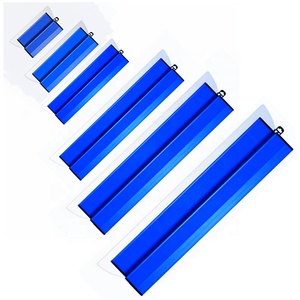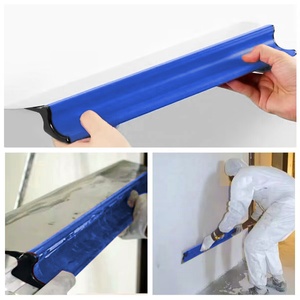
All categories
Featured selections
Trade Assurance
Buyer Central
Help Center
Get the app
Become a supplier

(8174 products available)



















The types of bevel is an essential piece of equipment in the realm of industrial machinery, particularly within the machine tool equipment category. Designed to create precise chamfers on various materials, this tool is indispensable in achieving smooth edges and angles for components that require exacting standards. Chamfering is a process that involves cutting away the sharp edges of an object, typically at a 45-degree angle, to enhance the object's functionality or aesthetic. The types of bevel is widely used across industries such as automotive, aerospace, and manufacturing, where precision and quality are paramount. This machine not only improves the safety and usability of the parts it works on but also contributes to a more refined and professional finish.
There are several types of types of bevel available on the market, each designed to cater to specific needs and applications. Manual chamfering machines are ideal for small-scale operations or workshops where precision and control are necessary. These machines allow for hands-on adjustments and are typically more affordable. Semi-automatic chamfering machines bridge the gap between manual and fully automated systems, offering enhanced productivity with some manual oversight. Fully automatic chamfering machines provide the highest level of efficiency and precision, suitable for large-scale industrial operations. They are equipped with advanced control systems that allow for consistent and repeatable results. Each type of types of bevel offers unique advantages, making them suitable for different operational requirements.
The types of bevel boasts a variety of functions and features that enhance its usability and performance. One key feature is the adjustable cutting angle, which allows operators to customize the chamfer to meet specific requirements. This flexibility is crucial for applications that demand precise angles and finishes. Additionally, these machines often include variable speed controls, enabling operators to adjust the cutting speed according to the material type and thickness. This ensures optimal cutting performance and prevents damage to the workpiece. Many types of bevel are equipped with dust collection systems to maintain a clean working environment and extend the machine's lifespan. The ergonomic design of these machines also enhances user comfort and reduces fatigue during prolonged use.
The construction of a types of bevel involves the use of high-quality materials and components to ensure durability and performance. Typically, these machines are built using robust metals such as steel or aluminum, providing a sturdy framework that withstands the rigors of industrial use. The cutting tools within the machine are often made from carbide or high-speed steel, known for their sharpness and longevity. These materials are chosen for their ability to maintain cutting efficiency and withstand wear over time. In addition, many types of bevel incorporate advanced electronics and sensors to facilitate precise control and monitoring of the chamfering process. These components help ensure that the machine operates smoothly and efficiently, delivering consistent results.
To use a types of bevel effectively, it is essential to understand its operational parameters and capabilities. Begin by selecting the appropriate machine type based on the material and the desired chamfer angle. Ensure that the cutting tool is properly installed and aligned to achieve optimal results. Adjust the machine settings, such as speed and angle, to match the specific requirements of the workpiece. During operation, maintain a steady feed rate to avoid overloading the machine and damaging the workpiece. Regular maintenance, including cleaning and inspection of the cutting tools, is crucial to prolong the machine's lifespan and ensure consistent performance. By adhering to these guidelines, operators can maximize the effectiveness of the types of bevel and achieve high-quality chamfers on their components.
Selecting the right types of bevel for your needs is crucial to achieving optimal performance and efficiency. Start by evaluating the specific requirements of your operation, including the type of material you will be working with and the desired chamfer angle. Consider the production volume as well; for large-scale operations, a fully automatic machine might be more suitable, whereas a manual or semi-automatic option could suffice for smaller projects. Pay attention to the machine's compatibility with the materials you frequently process, as this will ensure the types of bevel can handle the workload without compromising on quality.
Another important factor to consider is the technological features of the types of bevel. Machines equipped with advanced control systems and automation capabilities can greatly enhance productivity by reducing manual intervention. Look for features such as adjustable speed settings, programmable controls, and integrated dust collection systems, which not only improve efficiency but also contribute to a safer and cleaner work environment. The availability of after-sales support and technical assistance should also influence your decision, as these services can be invaluable in maintaining the machine's performance over time.
When selecting a chamfer angle, consider the specific application and the material being processed. Different materials may require different angles to achieve the desired finish without compromising structural integrity. The angle should also align with industry standards and the functional requirements of the finished product.
Material compatibility is crucial as different materials have varying hardness and composition, which can affect the cutting efficiency and tool wear. Choosing a types of bevel that is compatible with your primary materials ensures durability and consistent performance, reducing the risk of machine damage or subpar results.
Regular maintenance practices include routine cleaning to remove debris and dust, inspection of cutting tools for wear, and lubrication of moving parts. These practices help extend the lifespan of the types of bevel and ensure it continues to operate at peak efficiency, minimizing downtime and repair costs.
Yes, many types of bevel models are versatile and can process a variety of materials, including metals, plastics, and composites. However, it's important to verify the machine's specifications and adjust the settings accordingly to accommodate different material properties and achieve the desired chamfer quality.
Advanced control systems in a types of bevel offer numerous benefits, such as precise control over cutting parameters, enhanced repeatability, and reduced manual intervention. These systems can lead to improved productivity, consistent quality, and a more streamlined workflow, making them a valuable addition to any industrial setup.